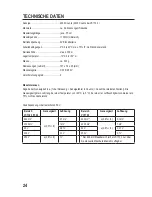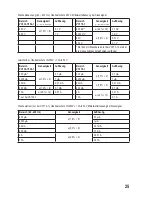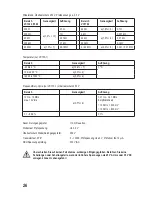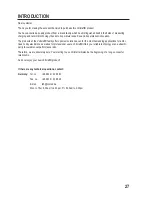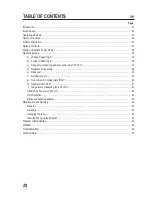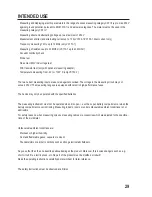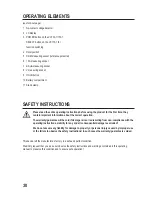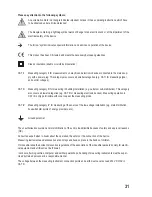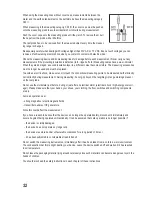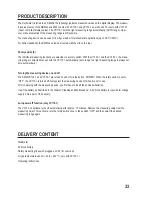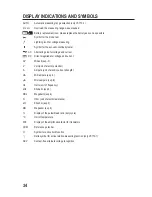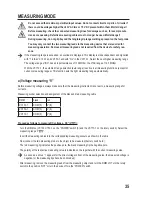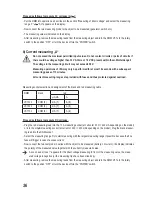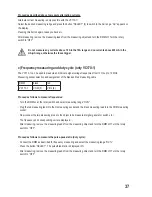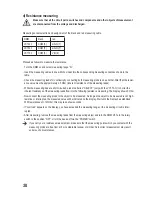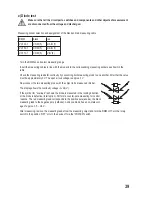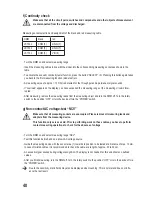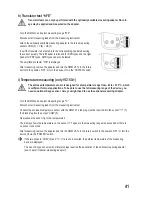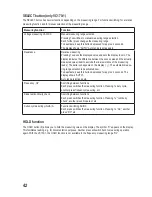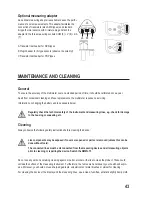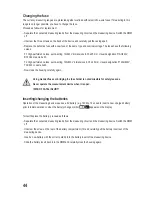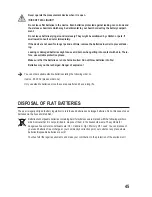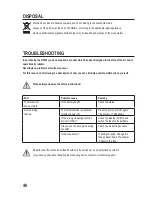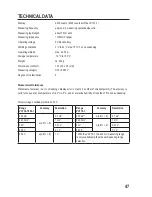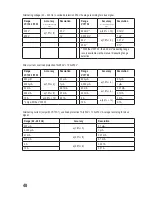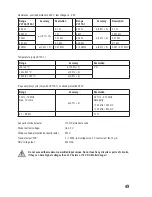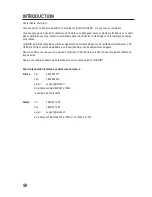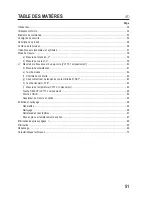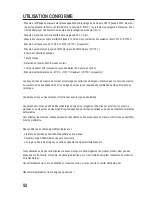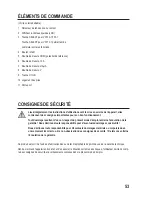
38
d) resistance measuring
Make sure that all the circuit parts, switches and components and other objects of measurement
are disconnected from the voltage and discharged.
Measuring socket selection and assignment of the black and red measuring cable
DMM
black
red
VC130-1
COM (5)
mA/Ω (7)
VC150-1
COM (5)
mA/Ω (7)
VC170-1
COM (5)
V/Ω (8)
Proceed as follows to measure the resistance:
- Turn the DMM on and select measuring range “Ω”.
- Insert the measuring cables in line with the model into the corresponding measuring sockets as shown in the
table.
- Check the measuring leads for continuity by connecting both measuring prods to one another. After that the resist-
ance value must be approximately 0.5 Ohm (inherent resistance of the measuring leads).
- While the measuring tips are short-circuited, press the button “SELECT” (only with the VC170-1)) to not let the
inherent resistance of the measuring leads flow into the following resistance measuring. The display shows 0 Ohm
- Now connect the measuring prods to the object to be measured. As long as the object to be measured is not high-
resistive or interrupted, the measured value will be indicated on the display. Wait until the display has stabilised.
With resistances of >1 MOhm, this may take a few seconds.
- If “overload” appears on the display, you have exceeded the measuring range or the measuring circuit is inter-
rupted.
- After measuring, remove the measuring leads from the measuring object and turn the DMM off. Turn the rotary
switch to the position “OFF” or turn the device off via the “POWER” switch.
If you carry out a resistance measurement, make sure that the measuring points which you contact with the
measuring prods are free from dirt, oil, solderable lacquer or similar. An incorrect measurement may result
under such circumstances.

